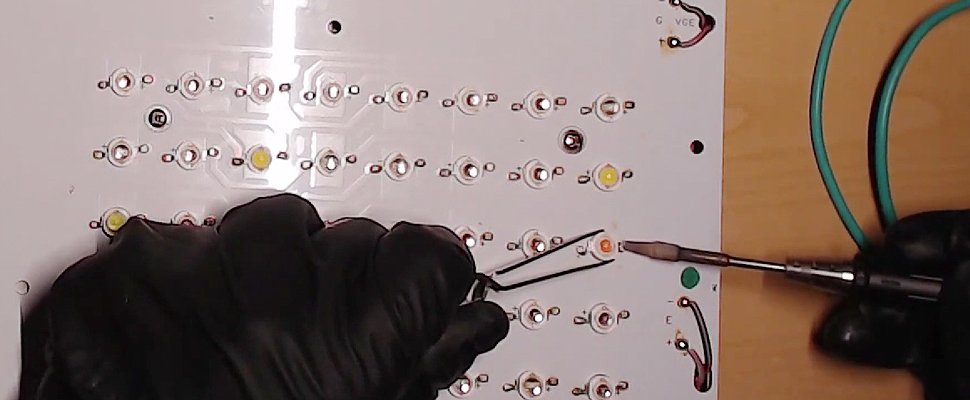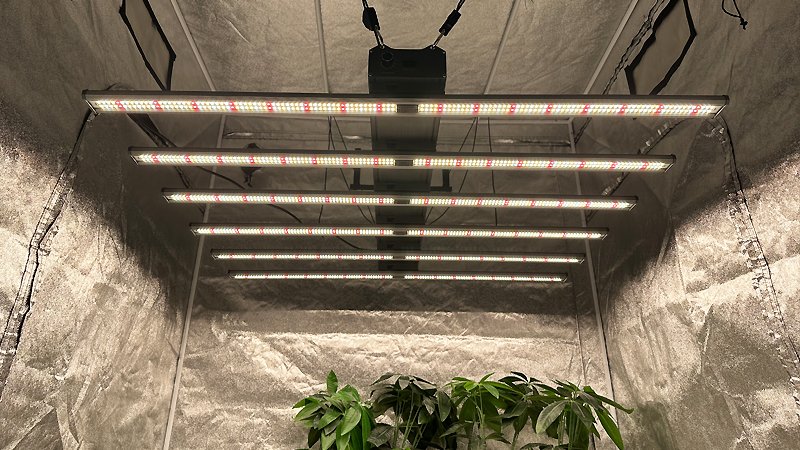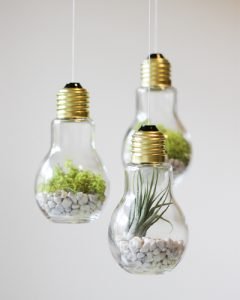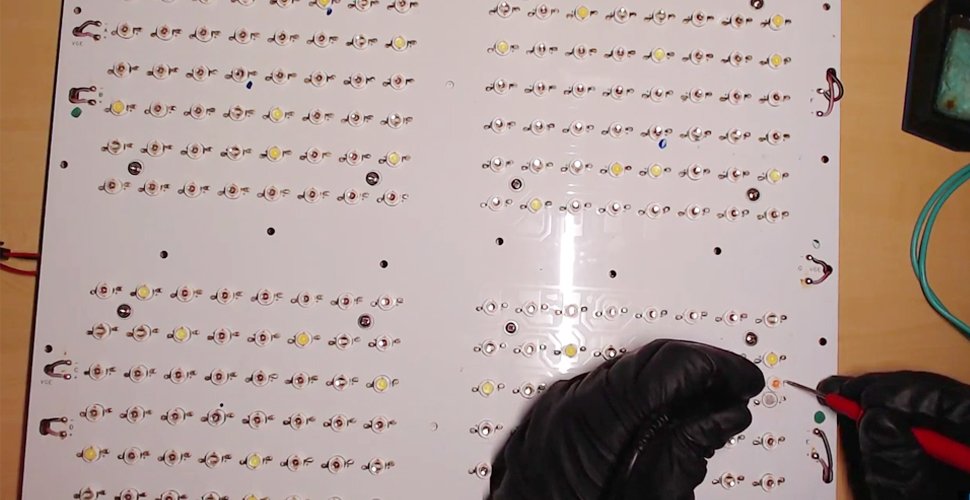İçindekiler
Bir acemi gördüm, LED büyümenin neden çalışmadığını sordum. Maker.pro'da yardım için bir yetiştirici gönderisi gördüm. LED büyüme ışıklarındaki ampullerden biri patladı ve diğer boncukların da çalışmamasına neden oldu.
Soruyu gündeme getirdi: Kırık LED ve direnci lehimlenebilir ve sonra bağlı kalmasını sağlamak için yerine bir tel lehim olabilir mi? Böyle şüphelerle karşılaştınız mı? Çözdün mü?
Nedenleri LED büyüme lambaları Çalışmayan genellikle güç kaynağı arızası, aşırı ısınma, hatalı kablolama, hatalı devre tasarımı, ürünün kendisinde arızalı hatalar veya hatta nem infiltrasyonuna bağlı hasar içerir.
Sebep ne olursa olsun, sorunun nedenini belirlemek için dikkatli ve sistematik olarak sorun gidermek önemlidir. Bu sorun için LED büyüme ışıklarını düzeltmek için atmanız gereken uygun adımlara bir göz atalım.
LED büyüme ışıkları kötü gidiyor mu?
Evet, LED büyüme ışıkları zamanla kötüleşecek.
Tüm elektronik cihazlar gibi, yabancı ot için LED ışıklarının sınırlı bir ömrü vardır ve performansları zamanla bozulur. Bununla birlikte, ömrü, bileşenlerin kalitesi, kullanıldıkları ortam ve Operasyon süresi.
Diyotlar zamanla bozulmaya başlayabilir, bu da ışık çıkışının azalmasına, renk kaymalarına ve spektral verimliliğe yol açabilir. Buna ek olarak, LED büyüme ışıklarına güç kaynağı da başarısız olabilir, bu da ışığın tamamen çalışmayı durdurmasına neden olabilir.
LED ışıklarınızın ömrünü çiçeklenme aşaması için uzatmak için, bunları önerilen çalışma koşulları altında kullanmak önemlidir. Işığı Temizle Tutun ve enkaz içermez ve sıcak ortamlarda kullanmaktan kaçınır.
Daha da önemlisi, yatırım yapmak da iyi bir fikirdir. saygın bir bitki lambası üreticisi. Çünkü daha iyi bileşenler kullanma eğilimindedirler ve daha uzun sürecek şekilde tasarlanmıştır.

LED Büyüme Işıkları Nasıl Onarılır?
Ampulleri bir dizi Noel ağacı lambasında ele aldıysanız, bir ışık söndüğünde, bu ipin bir dizi ampulünü dışarıda bıraktığını bilirsiniz. Bu cihazlar genellikle seri olarak bağlandığından, seri devreler paralel olarak bağlanır. Bu yüzden yanmış bir LED, aynı seri devresindeki diğer LED'lerin yanmamasına neden olur.
Maker ile ilgili sorunu keşfetmeye devam edin. Aslında, büyük olasılıkla koltuklanmadan yönlendirmenin yeni başlayanlar için basit bir görev olmadığını göreceksiniz. Her LED'in ısı dağılmasından ve her LED'in anakarta bağlanma şekli neden olur.
Bir arkadaşım, LED'in bacaklarını ve gövdesini keserek ve yüksek watt'lık bir lehimleme demir kullanarak ekstra bakır tel kuyruklarla yeni bir cihazı lehimleyerek bir tırnak bakım cihazındaki benzer bir 1W LED'i değiştirme başarısını paylaştı.
Buraya tıklayın ve LED büyüme ışıklarını nasıl düzelteceğinizi daha iyi anlamak için bu videoyu izleyin.
Kendi kendinize tamir etmeye çalışmanın tehlikeli olabileceğini ve ürünün garantisini geçersiz kılabileceğini belirtmek gerekir. Nasıl tamir edeceğinizden emin değilseniz, bir profesyonelle iletişime geçmelisiniz veya yanımda bir LED Grow Light Onarım Atölyesi bulmalısınız.
Aslında, LED bitki yetiştirme ışıklarında değiştirilmesi gereken iki bileşen güç dönüştürücü ve LED diyotun kendisidir.
Osram, Bridgelux, vb. Gibi pazar lideri üreticilerin kalite LED diyotlarının nadiren başarısızlık gösterdiği için LED diyotun başarısızlığı nadirdir. Genellikle, LED büyüme ışıklarının başarısız olmasına neden olan güç dönüştürücüdür.
Işık yüzü aşağı (boncuklarla kaplı) yumuşak bir havlu üzerine yerleştirebilirsiniz. Mahkeme vidalarını bir tornavida ile gevşetin ve vidaları güvenli bir yere yerleştirin.
Ön ve arka gövdeyi tekrar çekin ve iç elektrik bağlantılarını çekmeyi önlemek için muhafazayı yavaşça ayırın. Dahili elektronik ve elektrik bileşenleri artık kolayca görülebilir.
İşte LED büyüme ışıklarınızı gidermek ve onarmak için atabileceğiniz bazı genel adımlar.
- Güç kaynağını kontrol edin. Güç kaynağının düzgün çalıştığından ve ışığın düzgün bir şekilde takıldığından emin olun. Işık hala gelmezse, farklı bir çıkışa takmayı deneyin.
- Kabloları kontrol edin. Bitki aydınlatma LED'in devresindeki gevşek veya hasarlı kabloları kontrol edin. Varsa, hasarlı kabloları veya konektörleri değiştirmeniz gerekebilir.
- LED cipslerini kontrol edin. Işık üretmek için ayrı yongalar kullanırlar. Bu yongalardan biri veya daha fazlası hasar görürse, tüm ışığın arızalanmasına neden olabilir. Düzgün çalışıp çalışmadığını görmek için her çipi kontrol edin.
- Isı Lavabosunu Kontrol Edin. Bitki aydınlatma armatürleri çok fazla ısı üretir, bu da düzgün bir şekilde dağılmadığı takdirde LED çipine zarar verebilir. Isı lavabosunun düzgün çalıştığından ve temiz ve toz veya enkaz içermediğinden emin olun.
- Üreticiyle iletişime geçin. Tüm bu adımları denediyseniz ve ışıklarınız hala çalışmıyorsa, üreticiyle iletişime geçin. Sorunu çözmenize veya bakım sağlamanıza yardımcı olabilirler.
LED bitki ışıklarının geri dönüşümü neden daha popüler hale geliyor?
Artan sayıda yetiştirici vejetatif büyüme için LED ışıklar kullandığından, bu ışıkların uygun şekilde bertaraf edilmesi ve geri dönüşümü ihtiyacı artmaktadır.
Hepimiz biliyoruz ki, esrar yetiştirmek için LED ışıklar geleneksel bitki ışıklarından daha çevre dostudur. Bununla birlikte, alüminyum, bakır ve nadir toprak metalleri gibi malzemeler içerirler ve kırık LED'ler bir tür elektronik atıktır.
Geri dönüşüm, yeni ürünlerin üretimi için değerli malzemelerin geri dönüştürülmesine yardımcı olabilir Bakire malzemelere olan ihtiyacı azaltın ve üretim sürecinin karbon ayak izini düşürün.
Sonuç olarak, LED bitki aydınlatmasının geri dönüşümü giderek daha popüler hale geliyor. Birçok şirket ve kuruluş bu ışıklar için geri dönüşüm hizmetleri sunmaya başlamıştır ve e-atıkların sorumlu bertarafını ve geri dönüşümünü teşvik etmek için hükümet düzenlemeleri uygulanmaktadır.
Bir ışık fikstürünün atılması güvenli olup olmadığını nasıl anlarsınız?
Buna göre Öntoksik maddelerin kontrolü, bir öğenin tehlikeli olmadığından emin değilseniz, onu normal çöpe atmak yerine tehlikeli atık olarak geri dönüştürmelisiniz.
Öte yandan LED ampuller, herhangi bir tehlikeli kimyasal içermedikleri için atılması çok daha kolay ve daha güvenlidir. Onları atabilirsiniz.

LED bitki ışıkları nasıl geri dönüştürülür?
Birkaç farklı şekilde geri dönüştürebilirsiniz. Hepsine bir araya gelin.
Elektronik Geri Dönüşüm Programları ile Geri Dönüşüm
Birçok şehir ve kasaba elektronik atık kabul eden programlar veya merkezler vardır. Yerel bir elektronik geri dönüşüm programı bulun ve esrar için LED ışıklarını kabul edip etmediklerini sorun.
Green Citizen’in Yeşil Dizini posta kodunuza en yakın ampul arıtma tesisini bulmanıza yardımcı olabilir.
Lütfen LED ampulü girin. “Aramak” Eğer bir tane varsa. İçinde “Konum,” Ampulü geri dönüştürmek istediğiniz konumun adresini veya posta kodunu girin, ardından onaylayın ve arayın. Saniyelerle düzinelerce sonuç alacaksınız.
Geri Dönüşüm Merkezi'nin 5 ila 100 mil arasında değişen konumunuzdan mesafesini seçebilirsiniz.

Üreticiye veya perakendeciye danışın
Onları kabul eden yerel bir tesis bulamıyorsanız, Bitki Büyüme Işık Üreticisi ile temasa geçme veya perakendeci. Onlara bir geri dönüşüm programı olup olmadığını veya ürünün nasıl uygun şekilde atılacağı konusunda rehberlik sağlayabileceklerini sorun.
Ampuller ayrıca Home Depot, IKEA ve Lowe’ler gibi donanım veya ev geliştirme mağazalarında geri dönüştürülebilir. Bunlardan bazıları CFL'ler bile alacaktır, ancak floresan tüpler almayacaktır.
Bağış yapın veya sat
Işıklarınız hala iyi çalışır durumda ve onları sevmiyorsanız, bunları kullanabilen birine bağışlamayı veya satmayı düşünün. Çevrimiçi pazarda bir mesaj gönderebilirsiniz.
Parçaları yeniden kullanın
Çok uygulamalı iseniz, LED büyüme ışıklarını sökmeye ve mevcut parçaları kurtarmaya çalışabilirsiniz. Diğer DIY projeleri için kullanılabilecek LED'ler veya güç kaynakları gibi.
LED ampulleri yeniden kullanmanın birçok yolu vardır ve yaratıcılığınızı göstermenin harika bir yoludur. Ampulü dekore etmek için belirteçler, renkli kum, parıltı, akrilik boya ve diğer malzemeleri kullanabilirsiniz. Ampul daha sonra aşağıdakilerden birine dönüştürülebilir.
❉ Toprağı doldurun ve bir cam kap yapın
❉ Sevimli küçük bir vazo olarak kullanın
❉ Bir gazyağı lambasına dönüştür
❉ Noel dekorasyonları olarak boya ve kullanın
❉ Duvar asılı bir süs haline getirin

Jayes
AUXGROW'da Dijital Pazarlama Müdürü olan Jayes, hidrofonik sistemlere olan tutkusunu LED bitki yetiştirme lambaları konusundaki uzmanlığıyla birleştiriyor. Jayes, uygulamalı deneyimi ve derin anlayışıyla, sürdürülebilir tarım dünyasında size rehberlik ediyor.






